 IT workers who spend all day battling with clueless idiots who have just deleted critical OS files because they looked ‘messy’ already know it, but now it’s official: people who work in IT are the most stressed folks on the planet.
IT workers who spend all day battling with clueless idiots who have just deleted critical OS files because they looked ‘messy’ already know it, but now it’s official: people who work in IT are the most stressed folks on the planet.
Surging ahead of traditional stress leaders like medicine, engineering and education, a survey conducted by research firm SWNS for online learning provider SkillSoft found that a staggering 97% of IT workers claim to find their life at work “stressful on a daily basis”.
The poll – involving more than 3,000 people – also discovered that four-fifths of IT consultants felt stressed “before they even enter the workplace”, while around a quarter were so crushed by the “enormous pressure to perform at work” that they’d taken time off suffering with stress.
One poor techie sod who responded to the survey blubbered into his Coke can, “I spend most of my day fielding calls from people who don’t even have a basic knowledge of computers and printers. It is amazing the amount of time I spend teaching people where the on-off button is. And when I do actually find a technical problem to solve, I have my manager breathing down my neck wondering why I have a backlog of complaints.”
Meddlin’ managers
Interfering managers were also found to be a source of extra stress, with a third of IT professionals saying that pesky meddling managers made it difficult for them to get their jobs done.
The survey unearthed the main stress factors for people at work (why not see how many you can tick off?!) and these include deadlines, workload, feeling undervalued, having to take on other people’s work, lack of job satisfaction, lack of control over the working day and having to work long hours.
The survey insists that employers should take the problem of stress seriously, citing the Health & Safety Executive’s research that puts stress as the biggest cause of working days lost through injury or ill health [an estimated 12.8 million lost days each year].”
In case you’re wondering about the other stressful jobs, here’s SkillSoft’s top ten stressful jobs
 IT
IT
Medicine/Caring Profession
Engineering
Sales and Marketing
Education
Finance
Human Resources
Operations
Production
Clerical
Skillsoft
Top tips to avoid office frazzle Elsewhere, an “office stress” study conducted by CareerBuilder.com found that more than three quarters of respondents felt “job burnout”, while over half felt under a “great deal of stress.”
Rosemary Haefner, CareerBuilder.com‘s vice president of human resources insisted that “high-pressure work environments are taking their toll on workers’ morale,” adding that the stress “can be detrimental to both workers, whose health and career progress may suffer, and employers, who pick up the tab in higher insurance costs and lost productivity.”
Happily, ol’ Rosie babe kindly offered some four top tips to help reduce office stress:
– Organize and prioritize by taking care of the more difficult and important tasks early in the day.
– Manage expectations so that you can achieve your goals and deliver on promises to others.
– Set aside a period of time dedicated to responding to e-mail and voicemails.
– Lastly, take care of yourself. A healthier you is more productive and happier.
We’d give that a go ourselves, but we’re busy with some idiot on the line and he’s… making…us…. chuffing…crazy… grrr…..
 High spending Americans splashed out over 100 billion dollars buying stuff on the web last year, with the popularity of Internet shopping set to keep on soaring.
High spending Americans splashed out over 100 billion dollars buying stuff on the web last year, with the popularity of Internet shopping set to keep on soaring.
 European mobile phone users are far more likely to use their handsets to access the web than their US counterparts, according to a new comScore Networks study.
European mobile phone users are far more likely to use their handsets to access the web than their US counterparts, according to a new comScore Networks study.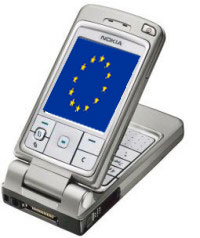 Portal sites were the most popular destinations for mobile surfers, with Google, Yahoo! and MSN leading the way, with branded Web sites set up by the phone operators, such as Vodafone, o2 and T-Mobile also proving a hit.
Portal sites were the most popular destinations for mobile surfers, with Google, Yahoo! and MSN leading the way, with branded Web sites set up by the phone operators, such as Vodafone, o2 and T-Mobile also proving a hit.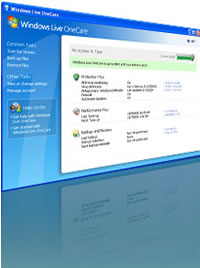 The study of sales figures after the first month of Microsoft’s Windows Live OneCare will not make pleasant reading for the current PC security software companies.
The study of sales figures after the first month of Microsoft’s Windows Live OneCare will not make pleasant reading for the current PC security software companies. NPD’s figures showed that the losses for the previously dominant security companies – Symantec cried the biggest tears with a 10.1% loss; McAfee said bye bye to 3.3% and Trend Micro 1.3%.
NPD’s figures showed that the losses for the previously dominant security companies – Symantec cried the biggest tears with a 10.1% loss; McAfee said bye bye to 3.3% and Trend Micro 1.3%. According to figures compiled by mmetrics.com, a research firm who strut around in the exciting world of mobile market measurement, when it comes to mobile phones there’s a hefty transatlantic gulf in smartphone tastes.
According to figures compiled by mmetrics.com, a research firm who strut around in the exciting world of mobile market measurement, when it comes to mobile phones there’s a hefty transatlantic gulf in smartphone tastes.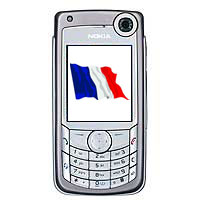 French say “Nous aimons Nokia”
French say “Nous aimons Nokia”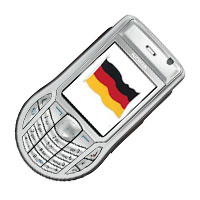 “Ja ist Nokia gut,” say Germans
“Ja ist Nokia gut,” say Germans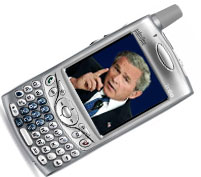 Americans go ape for Palm
Americans go ape for Palm With credit card-crazy Brits leading at the front, Europeans are spending ever more money online, with the yearly total for 2006 on course to hit €100bn.
With credit card-crazy Brits leading at the front, Europeans are spending ever more money online, with the yearly total for 2006 on course to hit €100bn. So where’s the cash going?
So where’s the cash going? 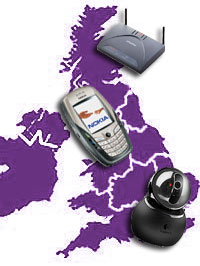 Brits are going wild for the latest technological innovations according to market research firm GfK in its biannual ‘UK Technology Barometer report.’
Brits are going wild for the latest technological innovations according to market research firm GfK in its biannual ‘UK Technology Barometer report.’ Not surprisingly, smartphones continue to set the cash tills ringing with a big increase in sales, while single-function PDAs are carrying on their slow decline, with sales slumping by 38.3%.
Not surprisingly, smartphones continue to set the cash tills ringing with a big increase in sales, while single-function PDAs are carrying on their slow decline, with sales slumping by 38.3%. Something will go wrong sooner or later with nearly one-fifth of all notebooks, with a new hardware component needed to sort the problem, according to a new survey by industry analysts Gartner.
Something will go wrong sooner or later with nearly one-fifth of all notebooks, with a new hardware component needed to sort the problem, according to a new survey by industry analysts Gartner. Laptops have also shown a significant improvement, with features like suspension mounting of hard drives and rubber bumpers between laptop lids and keyboards helping keep the damage tally down.
Laptops have also shown a significant improvement, with features like suspension mounting of hard drives and rubber bumpers between laptop lids and keyboards helping keep the damage tally down. Motherboard fry-ups and hard drive breakdowns are now the two main sources of failure for desktops, a situation brought about by the increasingly complexity of the things, with more components being integrated into the motherboard.
Motherboard fry-ups and hard drive breakdowns are now the two main sources of failure for desktops, a situation brought about by the increasingly complexity of the things, with more components being integrated into the motherboard. We’re frequently impressed with the observations of Marc Freedman from
We’re frequently impressed with the observations of Marc Freedman from 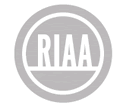 As illustrated, average weekly sales during the first four-week periods of 2006 decline from 17.56 million units/week in the 1st period to 16.68 million units/week in the 4th period (a drop of .9 million units or 5.1%). Compare this to average weekly sales for the first four-week periods of 2005 when average weekly sales grew from 7.38 million units/week in the 1st period to 8.73 million units/week in the 4th period (an increase of 1.4 million units or 18.3%).
As illustrated, average weekly sales during the first four-week periods of 2006 decline from 17.56 million units/week in the 1st period to 16.68 million units/week in the 4th period (a drop of .9 million units or 5.1%). Compare this to average weekly sales for the first four-week periods of 2005 when average weekly sales grew from 7.38 million units/week in the 1st period to 8.73 million units/week in the 4th period (an increase of 1.4 million units or 18.3%). Digital music sales rose to a point where they essentially offset the decline in CD sales in 2005. (Bainwol was right on that point, but that was for last year.) With the hypergrowth behind it, digital music sales can no longer make up for the hemorrhaging of physical music sales nor will it return the music industry to its prior glory days.
Digital music sales rose to a point where they essentially offset the decline in CD sales in 2005. (Bainwol was right on that point, but that was for last year.) With the hypergrowth behind it, digital music sales can no longer make up for the hemorrhaging of physical music sales nor will it return the music industry to its prior glory days. Unlike the transition from albums to CDs or video tapes to DVD, ‘going digital’ is not a simple format media transition. The use of digital technologies and the Internet has and will continue to fundamentally change how entertainment is created, stored, distributed, and consumed. Technology has undermined the entertainment industry’s pretense of control despite its best efforts.
Unlike the transition from albums to CDs or video tapes to DVD, ‘going digital’ is not a simple format media transition. The use of digital technologies and the Internet has and will continue to fundamentally change how entertainment is created, stored, distributed, and consumed. Technology has undermined the entertainment industry’s pretense of control despite its best efforts. IT workers who spend all day battling with clueless idiots who have just deleted critical OS files because they looked ‘messy’ already know it, but now it’s official: people who work in IT are the most stressed folks on the planet.
IT workers who spend all day battling with clueless idiots who have just deleted critical OS files because they looked ‘messy’ already know it, but now it’s official: people who work in IT are the most stressed folks on the planet. IT
IT UK shoppers are set to spend an average £1,000 each online in 2006, according to the yearly report by the Interactive Media in Retail Group (IMRG).
UK shoppers are set to spend an average £1,000 each online in 2006, according to the yearly report by the Interactive Media in Retail Group (IMRG). According to IMRG’s own research, usability, customer retention, and interactive marketing were cited as the biggest concerns by over half of their members, with e-crime and delivery fulfilment seen as high-priority issues by around a third.
According to IMRG’s own research, usability, customer retention, and interactive marketing were cited as the biggest concerns by over half of their members, with e-crime and delivery fulfilment seen as high-priority issues by around a third. Compare that to stingy shoppers in the south who said that they’d spend no more than £50 per month online, and wouldn’t dream of shelling out sums as high as £5,000.
Compare that to stingy shoppers in the south who said that they’d spend no more than £50 per month online, and wouldn’t dream of shelling out sums as high as £5,000.